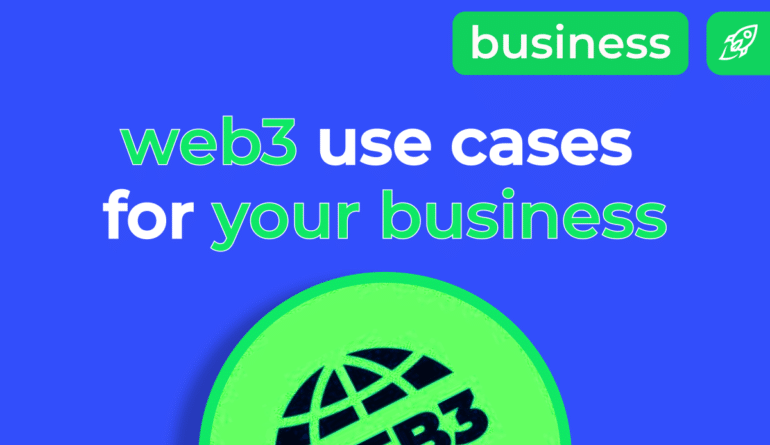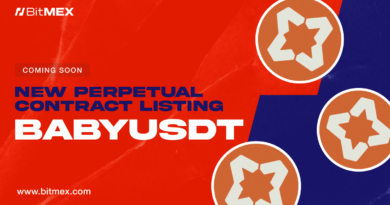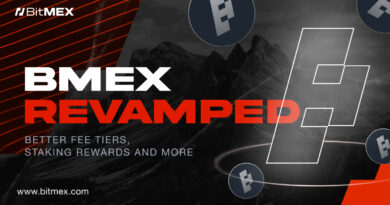14 Web3 Use Cases Your Business Can’t Ignore in 2025
The shift to Web3 isn’t a leap into the unknown. No, it’s a practical response to real challenges: rising data risks, expensive middlemen, and outdated systems that can’t scale. What’s changing now is that Web3 use cases are no longer limited to crypto startups. Businesses in logistics, finance, education, and healthcare are already adopting decentralized tools to solve everyday problems. This guide explores 14 real examples of how Web3 is showing up in business—quietly, efficiently, and with serious staying power.
Why Web3 Matters for Businesses in 2025
Web3 is changing how businesses interact with customers, data, and money. In 2025, decentralized technologies aren’t experimental anymore—they’re essential.
We’ve already seen companies adopting blockchain for supply chains, dabbling in tokenization, and implementing smart contracts that remove middlemen. These tools give you more control, lower costs, and extend global reach. Unlike Web2 systems, Web3 doesn’t rely on a single authority. This increases transparency and reduces the risk of censorship or data breaches.
Read more: What is Web3?
If your business deals with digital payments, Web3 unlocks new levels of flexibility. Through crypto wallets and stablecoins, you can accept payments instantly across borders—with lower fees and fewer delays.
That’s where products like Changelly PAY come in. It lets you accept over 1,000 cryptocurrencies in just a few clicks. For platforms and wallets that need fast access to token swaps, the Changelly Exchange API offers deep liquidity and competitive rates. If you’re focused on onboarding users with fiat payments, the Fiat API enables smooth crypto purchases using traditional currencies—helping you reach a broader audience.
In 2025, ignoring Web3 means falling behind: adopting it early gives you a clear edge.
1. Decentralized Finance (DeFi) & Cross-Border Payments
This is one of, if not the most famous ways of applying Web3 technology—revolutionizing how we access and use financial services. Decentralized Finance (DeFi) removes intermediaries and gives users full control over their assets. It runs on smart contracts, usually built on Ethereum or similar blockchains.
So, how does it work? Through peer-to-peer lending platforms, you can lend or borrow crypto directly. Smart contracts handle everything: locking funds, calculating interest, and managing repayments automatically. Platforms like Aave and Compound make it possible to earn interest or borrow without relying on traditional banks.
Yield farming is another key DeFi feature, rewarding users for providing liquidity to protocols. You deposit tokens into liquidity pools and, in return, earn rewards from transaction fees or protocol-specific incentives. Projects like Yearn Finance even automate yield strategies to help users maximize returns.

Trading also looks different in Web3. Decentralized exchanges (DEXs) such as Uniswap and Curve let users trade tokens without intermediaries. These platforms use Automated Market Makers (AMMs), relying on user-provided liquidity instead of traditional order books.
International payments are faster and cheaper thanks to Web3. Stablecoins like USDC and USDT enable instant cross-border transfers without the delays or fees of conventional banking. Projects like Stellar and Ripple are working on scalable, compliant payment infrastructure.
Lastly, next-gen liquidity tools are emerging through Decentralized Autonomous Market Making (DAMM). These use on-chain algorithms to dynamically adjust prices and manage liquidity. A notable example is Mangrove, which allows for customizable market-making strategies via smart contracts.
2. Tokenisation of Assets (Real Estate, Intellectual Property, and Digital Goods)
Web3 enables the tokenization of both real-world and digital assets: converting them into blockchain-based tokens that represent ownership, access rights, or value. Tokenization makes assets easier to trade, increases liquidity, and allows for fractional ownership.
For example, fractional ownership of real estate is now possible through tokenized property shares. Instead of purchasing an entire property, investors can buy fractions of one. Projects like RealT offer tokens backed by real rental properties in the U.S., giving users a share of ownership and rental income.
Intellectual property rights and royalties can also be tokenized. Creators can issue tokens that represent rights to music, patents, or media. These tokens can track usage and automate royalty payments. Platforms like Async Art even let artists tokenize layered digital artworks, with royalties distributed as each layer is sold or used.
In the metaverse, Web3 powers the ownership and trade of virtual real estate. Platforms like Decentraland and The Sandbox allow users to buy, rent, and develop parcels of digital land. These assets are represented as NFTs, providing verifiable on-chain proof of ownership.
3. Decentralized Identity (DID) & Blockchain-Based Identity Management
Web3 can give you full control over your digital identity. With Decentralized Identifiers (DIDs), you own your personal data instead of handing it over to centralized platforms. This approach is known as Self-Sovereign Identity (SSI).

SSI enhances privacy and security by moving away from traditional, centralized databases. Instead, DIDs store encrypted identity data either on-chain or locally on your device. You have the freedom to share only the specific information required for any given interaction. Projects like ION—built on Bitcoin by Microsoft—are leading the way in this space.
Web3 also makes secure KYC and AML checks possible without centralized data storage. Protocols such as Civic and Polygon ID enable user verification without exposing all their information. This means institutions can stay compliant while allowing users to retain control over their privacy.
Your DID can be used to log in to various services or access financial platforms: one wallet, one ID. This concept even extends to social media through projects like Lens Protocol, where you control your content and followers, rather than relying on a centralized network.
4. Supply Chain Transparency & Logistics
Web3 brings full visibility and trust to supply chains. By recording each step of a product’s journey on a tamper-proof blockchain ledger, companies can prevent fraud, reduce losses, and ensure regulatory compliance.
Every transaction, from sourcing raw materials to final delivery, is logged on-chain, creating a transparent and auditable trail. For instance, not so long ago IBM and Maersk launched TradeLens using Hyperledger to track shipping containers globally with end-to-end transparency.
And smart contracts take supply chain automation a step further. They can trigger payments when shipments arrive or pass quality checks, minimizing delays and disputes. CargoX streamlines international trade by managing shipping documents securely and without paperwork.
Industries like agriculture, pharmaceuticals, and luxury goods are using blockchain to verify origin and authenticity. One example is TE-FOOD, which ensures traceability in food supply chains. Meanwhile, MediLedger helps pharmaceutical companies meet FDA compliance. Some luxury brands use Aura to prove the origin of high-end products.
Learn how to spot scams and protect your crypto with our free checklist.

5. Decentralized Autonomous Organisations (DAOs) & Governance
Decentralized Autonomous Organizations (DAOs) allow communities to manage businesses, protocols, or funds without centralized control. Instead of a traditional hierarchy, decisions are made through token-based voting, with smart contracts automatically enforcing the outcomes.
Startups and crypto projects often use DAOs to raise funds, govern protocols, and even make hiring decisions. For example, MakerDAO oversees the DAI stablecoin, managing interest rates and collateral policies through community votes. One of the most notable experiments, ConstitutionDAO, raised $47 million in a collective bid to purchase a rare copy of the U.S. Constitution.
Voting and governance are built directly into DAO infrastructure. There is a wide variety of tools that enable transparent, on-chain voting. They eliminate closed-door decision-making and bring accountability to every proposal.
DAOs also offer a new vision for corporate governance. Platforms like Aragon allow anyone to launch a fully operational DAO with customizable rules. You can manage treasuries, memberships, and proposals, all without the need for traditional legal or administrative structures.
6. Smart Contracts & Automated Business Processes
Smart contracts automate tasks that once required intermediaries. These are self-executing agreements that trigger actions when specific conditions are met—saving time, reducing costs, and minimizing human error. You can use smart contracts for anything from insurance payouts to payroll. They make it much easier to automate certain business operations and processes.
For example, there are now precedents of legal agreements moving on-chain. Platforms like OpenLaw and Kleros provide tools to create and enforce digital contracts. Kleros even includes decentralized arbitration through crowdsourced juries. And in the insurance space, parametric smart contracts are currently gaining traction. Etherisc offers flight delay coverage where smart contracts verify delays and trigger payouts automatically.
Smart contracts are transparent and tamper-proof. Their logic can be audited at any time, and once deployed, they execute exactly as programmed—without bias or unexpected changes.
7. Web3 in Healthcare & Credentialing
The impact of blockchain on the healthcare industry has already been discussed at length over the past couple of years. For one, Web3 can transform healthcare by giving individuals control over their personal data.
With blockchain-based medical records, your health information is secure, private, and owned by you—and not stored on a centralized hospital server. You decide who gets access. These records are encrypted, tamper-proof, and portable. Projects like Medibloc and Healthereum use decentralized systems that let patients manage and share their health data in a safe and transparent way.
Academic and professional credentials are also moving to the blockchain. Schools, universities, and licensing bodies can issue digital credentials that are verifiable, secure, and impossible to forge. During the COVID-19 pandemic, the World Health Organization used blockchain to issue smart vaccine certificates.
For researchers, blockchain opens up new ways to share data responsibly. Protocols like Ocean Protocol enable hospitals and labs to share anonymized datasets for AI and medical research without compromising patient privacy.
8. Decentralized Social Media & Content Monetisation
Traditional social media platforms profit from your data. Web3 changes that by giving you ownership over your content, identity, and monetization. Decentralized social platforms remove ads, algorithms, and censorship, putting users back in control. They are built on blockchain-based identities and decentralized finance models.They offer user-owned social graphs, meaning your followers and content move with you across platforms instead of being locked into one app.
For creators, Web3 opens new ways to earn directly from their audience. You can tip, subscribe, or unlock premium content using crypto. Platforms like Mirror even let writers turn blog posts into NFTs, giving creators real value without relying on intermediaries.
Decentralized advertising is evolving, too. Brave Browser, for example, pays users to view ads, while advertisers use tokens to reach audiences without collecting personal data. It’s a model that keeps browsing private and rewards you for your attention.
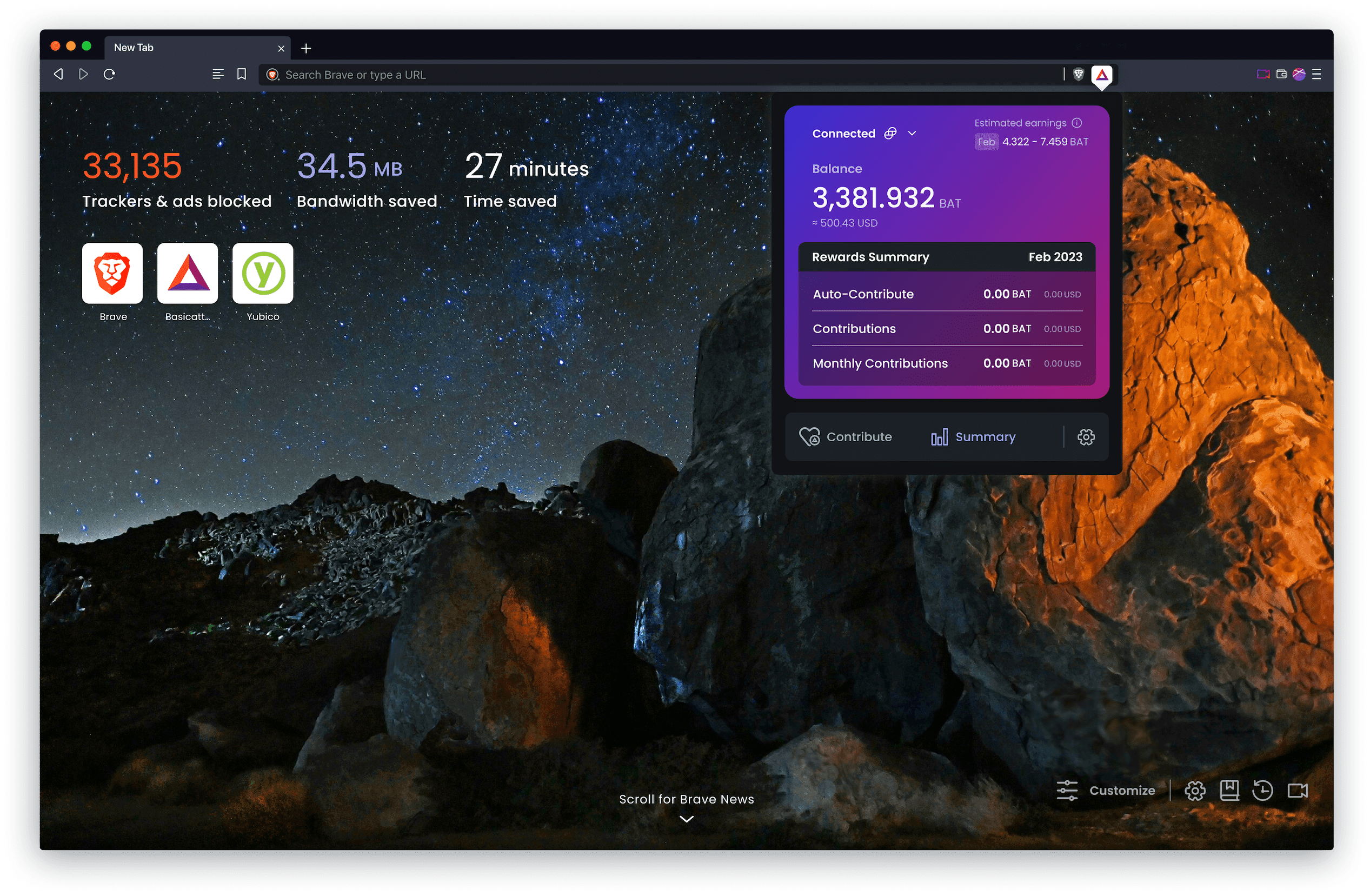
9. Web3 and the Creator Economy (NFTs, Gaming, and Digital Ownership)
Web3 is also a game-changer for creators. It changes how one can earn, share, and connect with their audience. For one, with NFTs (non-fungible tokens), artists, musicians, and developers can sell digital content directly, all without relying on centralized platforms to create and monetize assets with real monetary value.
NFTs prove digital ownership and enable new forms of engagement. They’re not just speculative assets—well-known musicians like 3LAU and Kings of Leon have released albums as NFTs, giving fans exclusive access and unique experiences. Platforms like Foundation and Zora let artists mint and sell their work directly to collectors and community members.
Gaming is also being transformed by play-to-earn models. Games like Axie Infinity and Illuvium reward players with crypto and tradable in-game assets, giving players real ownership and value from their time spent in-game.
Read more: Top NFT games.
Don’t like your NFT anymore? That’s OK! Decentralized marketplaces make it easy to trade digital content, virtual goods, and collectibles. Platforms like OpenSea and Rarible run on smart contracts to help creators sell directly to buyers without having to involve any intermediaries.
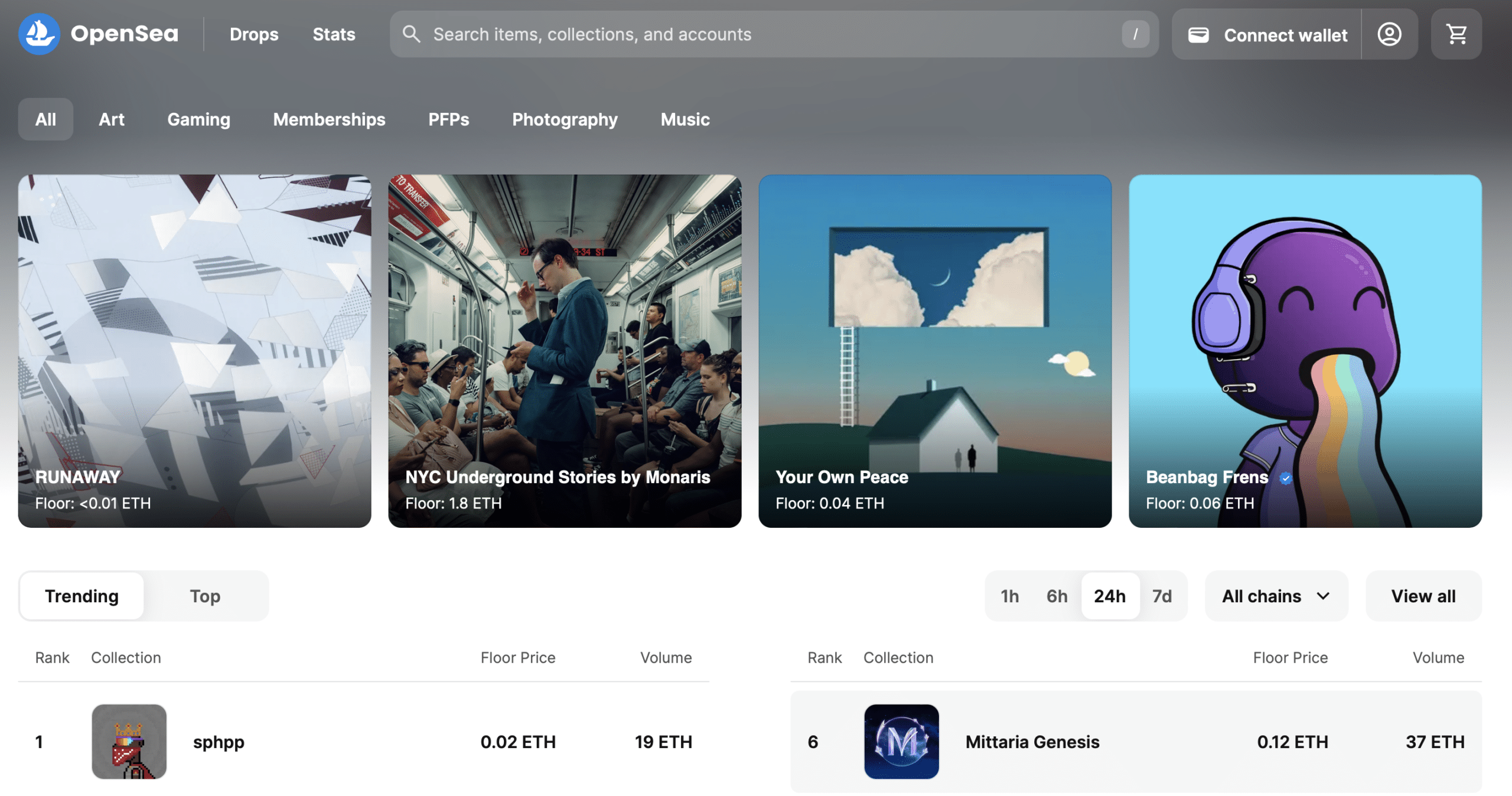
10. Decentralized Storage Solutions & Privacy-Focused Data Management
Web3 replaces traditional, centralized servers with decentralized storage solutions. Blockchain-based cloud platforms allow you to store and share data securely—without censorship, downtime, or single points of failure.
Instead of relying on one provider, files are uploaded to distributed networks where encrypted data is stored in chunks across multiple nodes. Even if one node goes offline, your data remains safe. Platforms like IPFS and Filecoin offer secure, censorship-resistant storage that prioritizes availability and integrity.
As we have already mentioned previously, Web3 also puts you in charge of your personal data. Files, messages, and records remain under your control. Decentralized, AI-powered data marketplaces are emerging, too. You can share or sell data to researchers, developers, or marketers while keeping your identity private. Platforms like Ocean Protocol enable encrypted data exchanges where users retain full ownership and control.
11. Web3 in the Metaverse & 3D Virtual Workspaces
Web3 brings immersive collaboration into the digital world, giving users new ways to work, meet, and build without relying on centralized tech giants.
Decentralized metaverse platforms support real-time 3D interaction. You can host meetings, design virtual spaces, or run live events in shared environments. Projects like Spatial and Mozilla Hubs let users engage through customizable avatars and collaborative tools. These platforms operate on decentralized virtual economies. Web users can start businesses, sell digital goods, or offer services using crypto.
12. Web3 in Energy, IoT, and Autonomous Systems
Web3 enables smarter infrastructure across various sectors. It uses blockchain technology to build systems that are more secure, efficient, and user-focused. One key area of innovation is peer-to-peer energy trading, where real world assets like solar power can be tokenized and exchanged without relying on a central authority.
Projects such as Power Ledger and WePower have gained immense popularity by allowing users to sell excess energy directly within local grids. All transactions are recorded on-chain, giving web users full transparency and user ownership over their energy use and distribution.
Web3 also enhances network security for the Internet of Things (IoT). Devices are assigned unique blockchain identities, making it harder for attackers to spoof or tamper with them. Platforms like IOTA and Helium use decentralized protocols to secure everything from sensors to smart appliances, ensuring data security across connected environments.
These decentralized systems combine automation, privacy, and ownership, helping them to align with modern data privacy regulations while helping cities, homes, and transportation networks become smarter and more resilient.
13. Environmental Conservation & Sustainability
Web3 can unlock transparent, incentive-driven solutions for climate action. Through blockchain-based systems, carbon credits can be tracked, verified, and traded in ways that are typically more accountable and efficient than traditional methods.
Legacy digital platforms for carbon trading are often outdated. Web3 replaces them with open ledgers that provide proof and visibility at every step. Sustainability is also becoming a core feature of newer blockchains. Unlike energy-intensive networks like Bitcoin, platforms such as Algorand are designed to be energy-efficient.
Web3 also enables incentive models that reward users for climate-positive behavior. Through decentralized systems, individuals and businesses can earn tokens for recycling, using public transport, or reducing emissions. KlimaDAO is one example, turning carbon offsetting into a community-led ecosystem that promotes user ownership and participation.
14. Web3 in Education & Learning
Last but not least, Web3 can also transform education by making it more accessible, secure, and verifiable. Students can learn, earn certifications, and even pay tuition using decentralized platforms. Decentralized learning environments remove traditional barriers, allowing direct interaction between students and educators.
As we have already mentioned, blockchain technology also enables tamper-proof, verifiable credentials. Educational institutions can issue digital certificates that live on-chain, making them easy to share and impossible to fake. Meanwhile, smart contracts streamline the learning journey by automating milestones, course completions, and even tuition payments. Students can pay per class or unlock scholarships based on performance, reducing friction and increasing access.
Web3 also integrates AI and augmented reality to personalize content and create immersive, real-world learning experiences—helping learners from all across the globe build skills in a way that’s both efficient and future-ready.
How Businesses Can Benefit From Web3
Web3 gives businesses more control over data, operations, and customer engagement without relying on traditional digital platforms. Here’s how:
- Verified Supply Chains
Use blockchain technology to increase transparency and improve supply chain management. - Smart Contract Automation
Streamline workflows and reduce errors with self-executing contracts. - Decentralized Storage
Protect data with secure, resilient systems like Filecoin—no central servers. - Tokenized Assets
Turn unique digital assets into new revenue streams through tokenization. - Community Governance
Launch decentralized autonomous organizations (DAOs) to align incentives and boost engagement. - Stronger Compliance & Security
Meet privacy laws and prevent fraud with encrypted ID tools. - Smarter Insights
Combine on-chain data with machine learning for better decisions.
How to Prepare Your Business for Web3
To stay competitive in the blockchain industry of today, begin by identifying areas of your business that still rely on fragile, centralized systems. Decentralized solutions can replace slow intermediaries with faster, more secure alternatives, bringing greater value to both operations and customer experience.
Next, train your teams on new technology like smart contracts, crypto wallets, and token standards. This isn’t just for developers—your marketing, finance, and compliance teams also need to understand how these tools work in real life business scenarios. Knowledge is power!
For a practical starting point, explore various B2B offers from reliable platforms. For example, Changelly provides access to various APIs that enable you to easily accept crypto payments or support crypto swaps and crypto purchases on your own website or app. These services let you onboard many users quickly without needing to build infrastructure from scratch.
Industries like e-commerce, SaaS, and finance can also integrate decentralized identity tools to streamline KYC and user onboarding. As blockchain technology advances, these upgrades prepare your business for the Web2 to Web3 transition.
And remember, you don’t need to commit fully from day one. Smaller, modular ideas like tokenized loyalty programs, crypto payments, or AI-enhanced smart contracts offer low-risk ways to experiment with and see Web3 and artificial intelligence in action.
What Industries Will Benefit The Most From Web3 in the Next Five Years?
It is very possible that we will see more and more Web3 use cases over the next five years, especially in industries currently slowed down by bureaucracy, fraud, or siloed data. Sectors dealing with sensitive information, global operations, or strict compliance stand to gain the most.
- Supply chain management will be transformed by traceability, automation, and reduced costs. Sectors like food, pharmaceuticals, and luxury goods are already using decentralized solutions to prevent counterfeiting and improve logistics.
- Finance and insurance will continue to evolve through smart contracts and decentralized finance, cutting manual processes and increasing trust. Companies are using blockchain to automate claims, verify identities, and lower transaction fees.
- Art and entertainment, led by the rise of digital art and NFTs, will give creators greater control over how they earn. While NFTs have lost quite a bit in terms of public favor—if they even ever had it—there are other ways to utilize Web3 in that space.
- Education, energy, and healthcare are adopting decentralized autonomous organizations and tokenized incentives to manage identities and securely share data. These sectors benefit from blockchain’s transparency and resistance to tampering.
According to the Gartner Hype Cycle, blockchain and Web3 are moving into the mainstream. Businesses that act early can shape industry standards and become leaders in this new era.
Final Thoughts
Web3 is changing how businesses and individuals interact online. Its decentralized nature removes reliance on centralized servers, giving you more control, transparency, and security. Whether you’re managing data, finances, or digital content, you can still get real benefits from it—there are many different Web3 use cases across various sectors. Exploring decentralized protocols gives you access to tools for automation, tokenization, and fair compensation. It also lets you engage your users in a new, decentralized way, with models like governance tokens that let communities influence decisions.
FAQ
What are the most practical Web3 use cases for businesses right now?
The most practical Web3 use cases include decentralized finance, supply chain tracking, digital identity, and decentralized storage solutions. These tools solve real business problems like high fees, data breaches, and inefficient processes by using blockchain technology and smart contracts.
How do I assess whether Web3 is relevant to my industry?
Start by identifying where your industry still depends on centralized servers or lacks transparency. If your business handles sensitive data, logistics, payments, or digital assets, Web3 use cases likely offer cost-saving and competitive benefits.
What are the main risks of Web3 adoption for businesses?
Risks include smart contract bugs, unclear regulations, and market volatility. Web3 is still evolving—early adopters must monitor compliance, test systems carefully, and plan for governance.
How can businesses integrate Web3 solutions without completely restructuring their systems?
You can begin with plug-and-play APIs or B2B tools like the ones offered by Changelly. Web3 offers modular solutions, so you don’t need to overhaul your entire tech stack. Start small and scale with what works.
Are Web3 technologies secure, and how can businesses mitigate risks?
Yes, but no system is 100% risk-free. Use audited code, multisig wallets, and proven platforms. Choose reliable protocols with strong reputations. You also reduce risk by educating staff and keeping critical operations off-chain when needed.
Disclaimer: Please note that the contents of this article are not financial or investing advice. The information provided in this article is the author’s opinion only and should not be considered as offering trading or investing recommendations. We do not make any warranties about the completeness, reliability and accuracy of this information. The cryptocurrency market suffers from high volatility and occasional arbitrary movements. Any investor, trader, or regular crypto users should research multiple viewpoints and be familiar with all local regulations before committing to an investment.
The post 14 Web3 Use Cases Your Business Can’t Ignore in 2025 appeared first on Cryptocurrency News & Trading Tips – Crypto Blog by Changelly.
Cryptocurrency News & Trading Tips – Crypto Blog by Changelly

